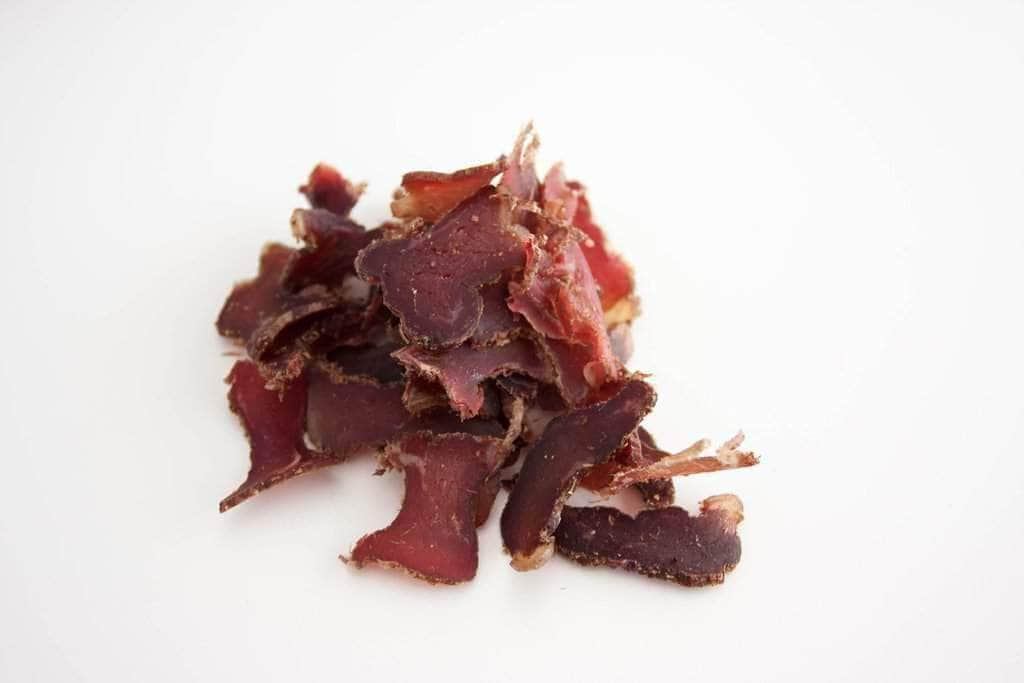Biltong is a form of dried, cured meat that originated in South Africa. It’s similar to beef jerky in composition, although the taste and production processes are much different. The word biltong comes from the Dutch word bil meaning “rump” and tong meaning “strip” or “tongue”.

Biltong is made using various types of meat
Biltong uses raw fillets of meat, which are cut into strips along the grain of the muscle or sliced across the grain. Different types of meat including chicken, fish, game and ostrich meat are all used to produce biltong. However, the most commonly used meat is beef. Beef is the primary meat because of its widespread availability and low cost.
Biltong is made using a curing process
Curing is a type of meat preservation that dates back to ancient times and involves the addition of salt to draw out any moisture from the meat. In doing this, the meat becomes an inhospitable environment for microbe growth, and therefore will not cause the food to spoil. Curing not only preserves the taste, texture and colour of raw or cooked meats, but also preserves all of the nutritious properties as well. Curing was the primary method for preserving meat up until the late 19th century.
Biltong is versatile
Biltong can be eaten on its own as a snack, but it can also be used in other forms of cooking and baking. It can be diced up and used in stew and soups, or else added to muffins or bread. Finely shredded biltong can be eaten on sandwiches. Biltong is extremely high in protein, with protein content reaching almost 70 per cent in some types.
While common in South Africa, Biltong’s popularity has begun to spread to various countries worldwide. To try it for yourself, visit our biltong store!
